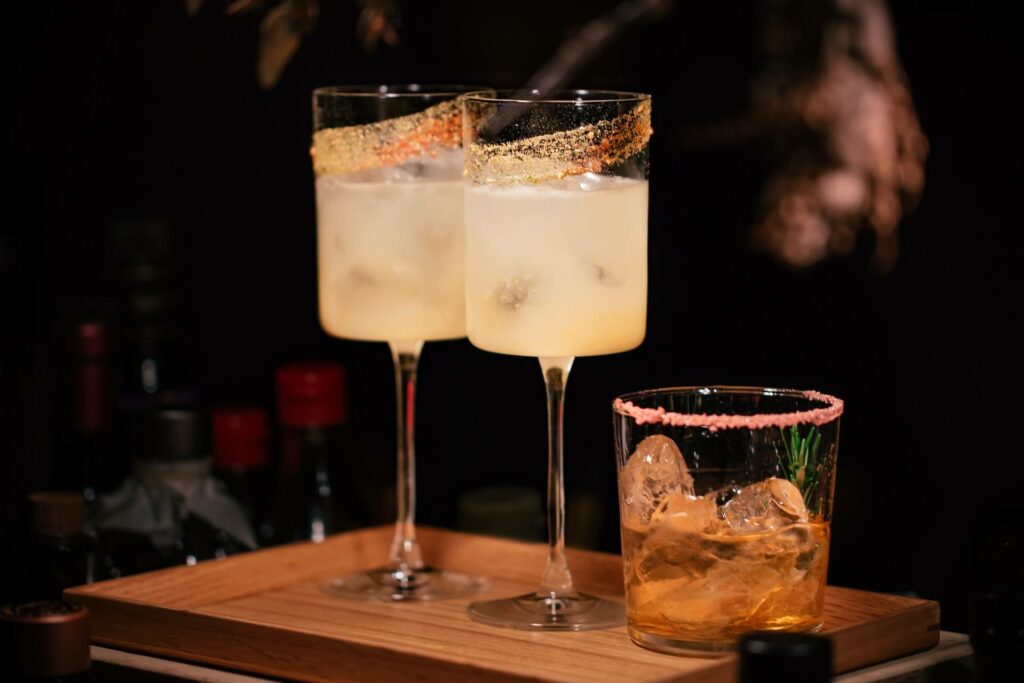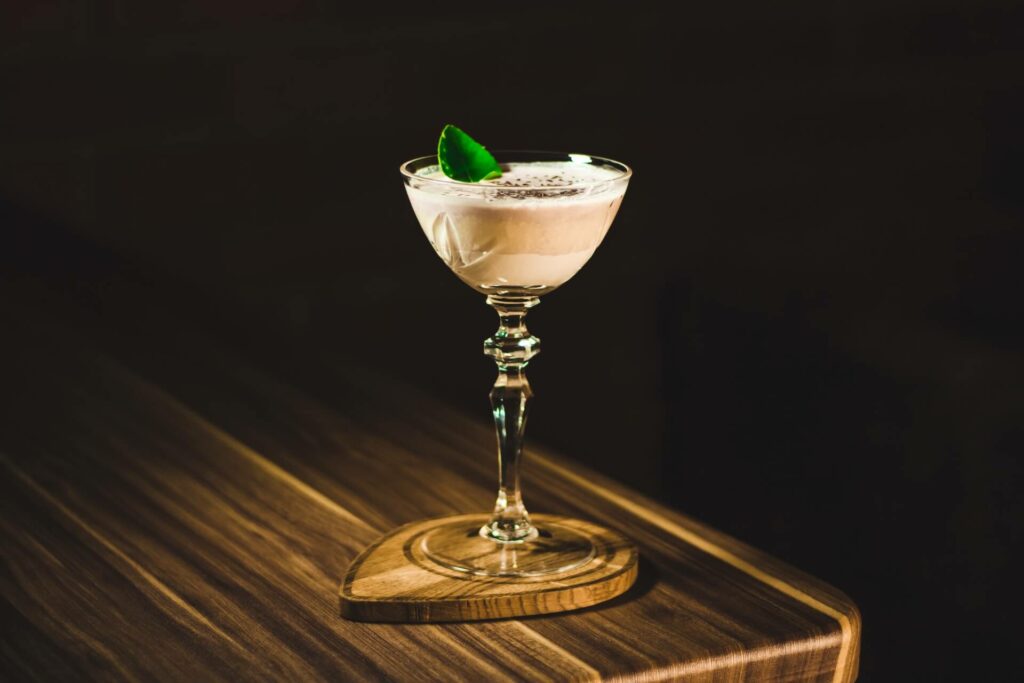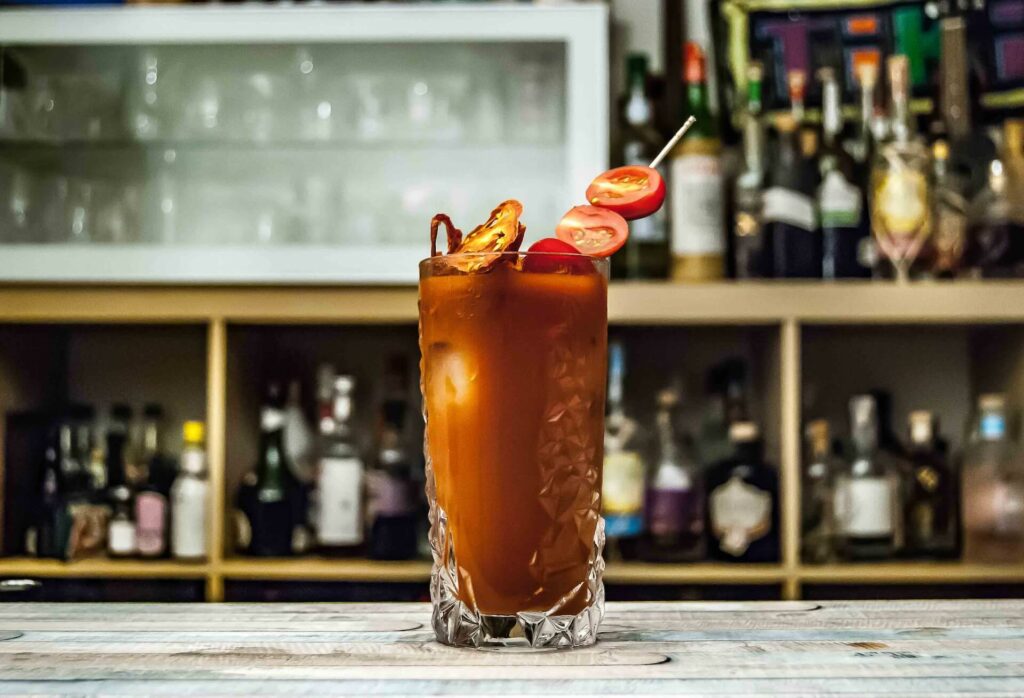If you’ve ever found yourself perplexed in a bar environment as you hear the bartender use phrases such as “part“, “straight-up”, “neat“, “on the rocks”, or “bruising”, you’re not alone.
With literally hundreds of variations of drinks and cocktails, it’s not uncommon to come across bartending terminology that you are unfamiliar with.
Whether you’re a cocktail enthusiast or aspiring bartender you may have heard the term “bruising” before, but what does bruising mean in bartending?
In this post, we’re going to take a deep dive into the bartending term “bruising” and provide everything you need to know about the process and why it’s done.
Let’s get into it…
What Does Bruising Mean In Bartending?
The term “bruising” refers to the technique of stirring or shaking a cocktail in a way that mixes ingredients together and deliberately creates air bubbles, as well as adding texture to the drink.
It’s a technique bartenders use for drinks that contain delicate ingredients, such as herbs and fruit, which can be easily overpowered by mixing too aggressively.
When a cocktail is “bruised”, it means that the ingredients have been agitated enough to release their flavors and aromas without being damaged or over-mixed.

When done correctly, the result is a well-balanced drink with a smooth texture and a visually appealing frothy head.
That said, it’s a process that can easily be overdone, resulting in a drink that is watery and tastes gross.
The actual term “bruising” comes from the idea that the bubbles created during the mixing process can cause the drink to appear cloudy or bruised, similar to how a piece of fruit may become bruised if it’s been handled too roughly.
Whilst a battered banana doesn’t sound too appealing, a bruised cocktail is considered desirable as it indicates that the drink has been mixed properly.
>> Read more: 6 BEST Mixing Glasses
Why Are Drinks Bruised?
Drinks are “bruised” to aerate the cocktail and cause the ingredients and notes to mix and blend together, which creates a more well-balanced flavor profile as well as creating a desirable cloudy and frothy appearance.
Any complex mixture of flavor and odors are generally divided into three parts; a top note, a middle note, and a base note.
Each type of alcohol has its own set of notes that are determined by the ingredients, production process, and aging process used to make it.
In gin, for example, the most distinct and desirable notes are the juniper and coriander notes, whereas, in whiskey, notes can include smokey, caramel, or nutty aromas.
These notes are what set drinks apart from one another and are what make certain drinks so desirable.
“Bruising” agitates the drink and causes the ingredients and notes to become aerated and blended together, resulting in a smoother, more well-balanced flavor profile that tastes delicious.
But it’s also a technique used to create air bubbles during the shaking or stirring process to give the drink a cloudy or murky visual appearance which can look amazing.

However, if the drink is shaken or stirred too vigorously or for too long, the ice and ingredients can over-dilute the drink which results in a watered-down drink.
How Do Bartenders Bruise Drinks?
- Ingredients – When a bartender wants to bruise a drink, they’ll make sure they have all of the ingredients on hand for the process, including the liquor, ice, mixers, and garnish.
- Choose the technique – Depending on the type of cocktail they’re creating, they’ll either shake or stir the drink. Shaking is often used for drinks that contain citrus or fruit juice while stirring is common for drinks that are meant to be served without ice.
- Preparation – They’ll grab their cocktail shaker or mixing glass and begin to add the ingredients with ice to fill the container 3/4 of the way full.
- Shaking – If shaking, the bartender will cover the container and shake vigorously for between 10 and 15 seconds, allowing the ingredients enough time to release their flavors and aromas.
- Stirring – If the drink is to be stirred, they’ll grab their bar spoon and gently whisk the ingredients with ice for around 30 – 40 seconds in a circular motion.
- Straining – Voila! the drink is now bruised and ready to be strained into the serving glass and presented to the customer. For shaken cocktails, it’s a good idea to double-strain the mixture to remove any ice slivers or fruit pulps that may have slipped through the first strain.
Which Drinks Are Commonly Bruised?
“Bruising” is a very common technique that is used for many drinks, especially cocktails with delicate ingredients such as herbs, citrus, fruit, or egg.
Essentially, any drink that has delicate ingredients can benefit from the bruising technique to help create a well-balanced flavor profile.
With that in mind, let’s take a look at some of the drinks that are commonly bruised;
- Martini
- Daquiri
- Margarita
- Whiskey Sour
- Sidecar
- Mai Tai
- Cosmopolitan
- Manhattan
- Old Fashioned
- Moscow Mule
- Whiskey Smash
- Gimlet
- Negroni
As you can see, there are many cocktails that can benefit from the bruising technique as so many recipes contain delicate ingredients.
More On Bruising Drinks
Shaking cocktails is the most common way to bruise drinks as it’s more efficient at mixing the ingredients together and aerating them.
Cocktails with ingredients such as egg whites, fruit juices, fruit, and cream are often bruised in a shaker to create a smooth and consistent texture.
Shaking the mixture also chills it and quickly creates a layer of froth on top which adds visual appeal to the cocktail.
Stirring on the other hand is a gentler way to bruise drinks as it doesn’t introduce air to the mix, it’s often used for cocktails that are clear or delicate in flavors such as Martinis and Negronis.

Whilst bruising using a shaker is vigorous, stirring allows the ingredients to blend more slowly and evenly without disrupting the aromas and flavors.
Bruising drinks is a great way to balance out flavor profiles and add texture, but it can easily be overdone by shaking for too long which can ruin the drink.
Skilled bartenders know exactly how to bruise using both the shaking and stirring techniques to bring out the best in the ingredients being used.
Wrapping Up
To sum up, the term bruising in bartending means when the cocktail is agitated by shaking or stirring the mixture with ice to add texture and create a well-balanced flavor profile.
It’s common when creating drinks that have delicate ingredients such as herbs, juices, or creams, and can be done by either shaking or stirring the mixture.
The term bruising may sound harsh, but it’s actually a delicate process to bring out the best in ingredients and create a cocktail that lives up to its full potential.
With proper technique and care, bartenders can create a cocktail that has the perfect balance of flavor and aromas to leave a lasting impression on their guests.


